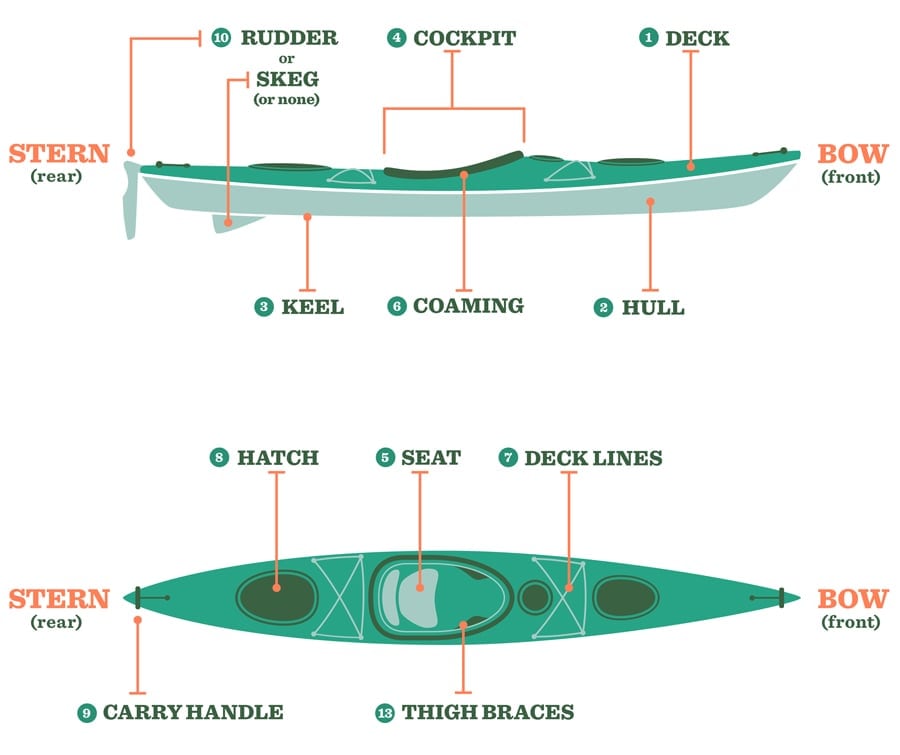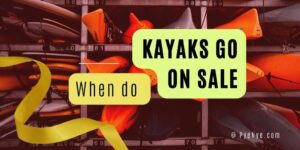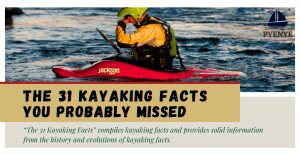Kayaking is a great way to spend your weekends and get amused in nature. But, before you can enjoy all that a kayak has to offer, it’s a good idea to understand the different parts of the kayak and how they work together.
In this guide, we’ll go over the different parts of a kayak, what they’re used for, and how they affect performance so you can be prepared for your next kayaking adventure.
Jump To A Section
Different Parts Of A Kayak
Kayaks have different parts, and knowing what they are will help you make sure you buy the right one.
Typically, a kayak has a deck, cockpit, hull, and several other parts. Depending on the type, these parts vary.
Let’s start with the cockpit;

Cockpit
When you think of a kayak, you probably think of a small boat that you can paddle by yourself. But there’s more to a kayak than meets the eye. The cockpit is the most important part of the kayak, and it’s where you’ll spend most of your time.
The cockpit is the zone where you sit.
It is typically enclosed by a spray deck, which is a piece of fabric that helps keep water out of the cockpit. The spray deck also helps to keep you dry while you are paddling.
Hull
Hull is the main body of the kayak, and it is usually made of plastic, fiberglass, or composites. The hull is what keeps the kayak afloat, and it also provides a platform for the paddler to sit on. The kayak’s hull is designed to provide a good balance between stability and speed.
Deck
The deck of a kayak is the top part of the hull, where you sit or stand. It’s also where you store your gear, and it’s the part of the kayak that’s most exposed to the elements.
Keel
The keel is the bottom part of the hull, and it helps to keep the kayak tracking in a straight line.
It’s generally made of a strong, durable material such as fiberglass or carbon fiber. It’s attached to the bottom of the hull and extends from the bow to the stern. The keel helps to provide stability and tracking ability while paddling.
Gunwale
The gunwales of a kayak are the uppermost edges of the hull, where the deck meets the sides. They are an essential part of the kayak’s structure, providing rigidity and strength.
Hatch
When it comes to kayaks, the hatch is one of the most important parts. The hatch is what allows you to store your gear in the kayak and keep it dry. It’s also what allows you to access your gear while you’re on the water.
There are three main types of kayak hatches: round, square, and oval. Each has its own unique set of pros and cons, so it’s important to choose the right one for your needs.
Round hatches are the most popular type of hatch and for a good reason. They’re easy to open and close, and they provide good access to the inside of the kayak. They’re also relatively watertight, so you don’t have to worry about things getting too wet inside your kayak.
Square hatches are another popular option, and they offer some advantages over round hatches. They’re easier to reach into, so you can access your gear more easily. They’re also generally more watertight, so you don’t have to worry about things getting too wet inside your kayak.
The downside of square hatches is that they can be a bit more difficult to close.
Oval hatches are the least popular type of hatch, but they offer some advantages over the other two types. They’re the easiest to reach into, so you can access your gear more easily. They’re also the most watertight, so you don’t have to worry about things getting too wet inside your kayak.
Seat
The seat – it is where you sit, and it plays a big role in your comfort and stability while paddling.
There are many different types of kayak seats on the market, made from a variety of materials.
Foam kayak seats are perhaps the most popular type of seat. They are comfortable and provide good back support. Foam seats are also relatively inexpensive. However, they can be damaged easily and may not last as long as other types of seats.
Mesh kayak seats are another popular option. They are made from a breathable mesh material, which helps to keep you cool in hot weather. Mesh seats are also very durable and can last for many years. However, they can be more expensive than foam seats.
Inflatable kayak seats are a good option for those who want a seat that is both comfortable and durable. Inflatable seats are made from strong, durable material and can be inflated or deflated as needed. However, they can be more expensive than other types of seats and may not be as comfortable.
Rudders
If you’re new to kayaking, it’s important to get to know what is a kayak’s rudder and how to do rudder works. In short, the rudder is a steering device that is attached to the back of the kayak and is operated using foot pedals inside the cockpit. The rudder helps the kayaker steer and control the direction of the kayak, making it an essential piece of equipment.
Let’s take a look at how they work;
As we mentioned above, rudders are operated using foot pedals inside the cockpit. When you push on the pedals, the rudder is moved in the direction that you want to go.
The pedals are connected to the rudder via a system of cables, and the amount of pressure that you apply to the pedals will determine how much the rudder moves.
Most kayaks have a rudder that can be moved left or right, but some also have rudders that can be moved up or down. This allows you to change the angle of the rudder, which can be helpful in different conditions.
A few tips on using a rudder properly
When you’re paddling in a kayak, it’s important to keep the rudder in the water at all times. This will help to provide steering and control, and it will also prevent the kayak from capsizing.
If you’re paddling in windy or choppy conditions, it’s especially important to keep the rudder in the water. This will help to stabilize the kayak and make it easier to control.
It’s also important to make sure that the rudder is in the correct position before you start paddling. If the rudder is too far to one side, it will make it difficult to steer the kayak.
Finally, when you’re paddling, make sure to keep your weight evenly distributed in the kayak. This will help to keep the kayak stable and will make it easier to control.
Skeg
The skeg is a small fin that is attached to the bottom of the kayak. It helps to keep the kayak tracking straight in the water.
Without a skeg, your kayak would be more likely to drift off course. And in windy conditions, a skeg can help you maintain control of your kayak and keep it tracking in the right direction.
Here are some tips for caring for your skeg:
- Inspect your skeg regularly. Check for cracks or damage.
- Clean your skeg regularly. A build-up of dirt and grime can cause your skeg to lose its effectiveness.
- Store your kayak in a cool, dry place. Humidity can cause your skeg to rust.
Follow these tips, and your skeg will help you enjoy many years of kayaking.
Scupper Holes
A kayak scupper hole is a small hole located in the bottom of the kayak that helps to drain water out of the kayak. The scupper hole is also useful for attaching a drain plug to the kayak.
Most kayaks have multiple scupper holes located throughout the kayak. And these holes can be found in both sit-in and sit-on-top kayaks. They are located in different areas of the kayak, depending on the type of kayak.
In a sit-in kayak, the scupper holes are located on the floor of the kayak. In a sit-on-top kayak, the scupper holes are located in the hull of the kayak.
Backrest
The backrest of a kayak is a support that helps keep your back straight and your paddling posture correct. It also provides some lumbar support. Most backrests are adjustable so that you can find the right position for your height and paddling style.
Now that you know the different parts of a kayak, you’re ready to hit the water! But before you go, make sure you know the safety precautions.


